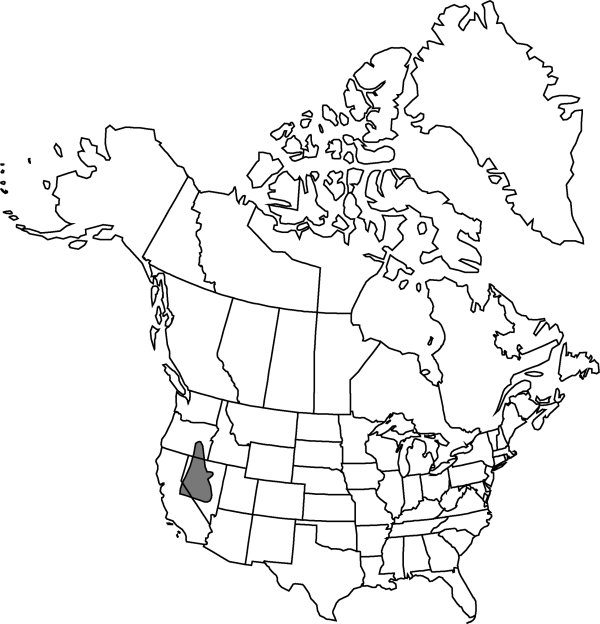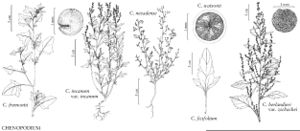Chenopodium nevadense
in N. L. Britton et al., N. Amer. Fl. 21: 16. 1916.
Stems erect to ascending, much-branched, 1.2–3.5 dm, glabrous to sparsely farinose. Leaves non-aromatic; petiole 0.2–1 cm; blade rhombic-ovate to elliptic or oblong, 3-veined, 0.5–2 × 0.3–1 cm, base cuneate, margins entire or occasionally with few teeth or lobes, apex rounded or obtuse, sparsely farinose. Inflorescences glomerules in terminal panicles, 5–29 × 8–27 cm; glomerules small, maturing mixed; bracts linear. Flowers: perianth segments 5, distinct nearly to base; lobes ovate to oblong, slightly keeled, 0.6–0.7 × 0.3–0.5 mm, apex acute to obtuse, glabrous, irregularly covering fruit at maturity; stamens 5; stigmas 2, 0.2 mm. Achenes ovoid; pericarp adherent, warty, smooth. Seeds 0.7–0.8 × 0.4–0.5 mm, margins rounded; seed coat black, smooth.
Phenology: Fruiting spring–fall.
Habitat: Sand, gravel, or clay flats, sandy alkaline soils, sandy calcareous alluvium
Elevation: 1200-1800 m
Distribution

Calif., Nev., Oreg.
Discussion
Selected References
None.
